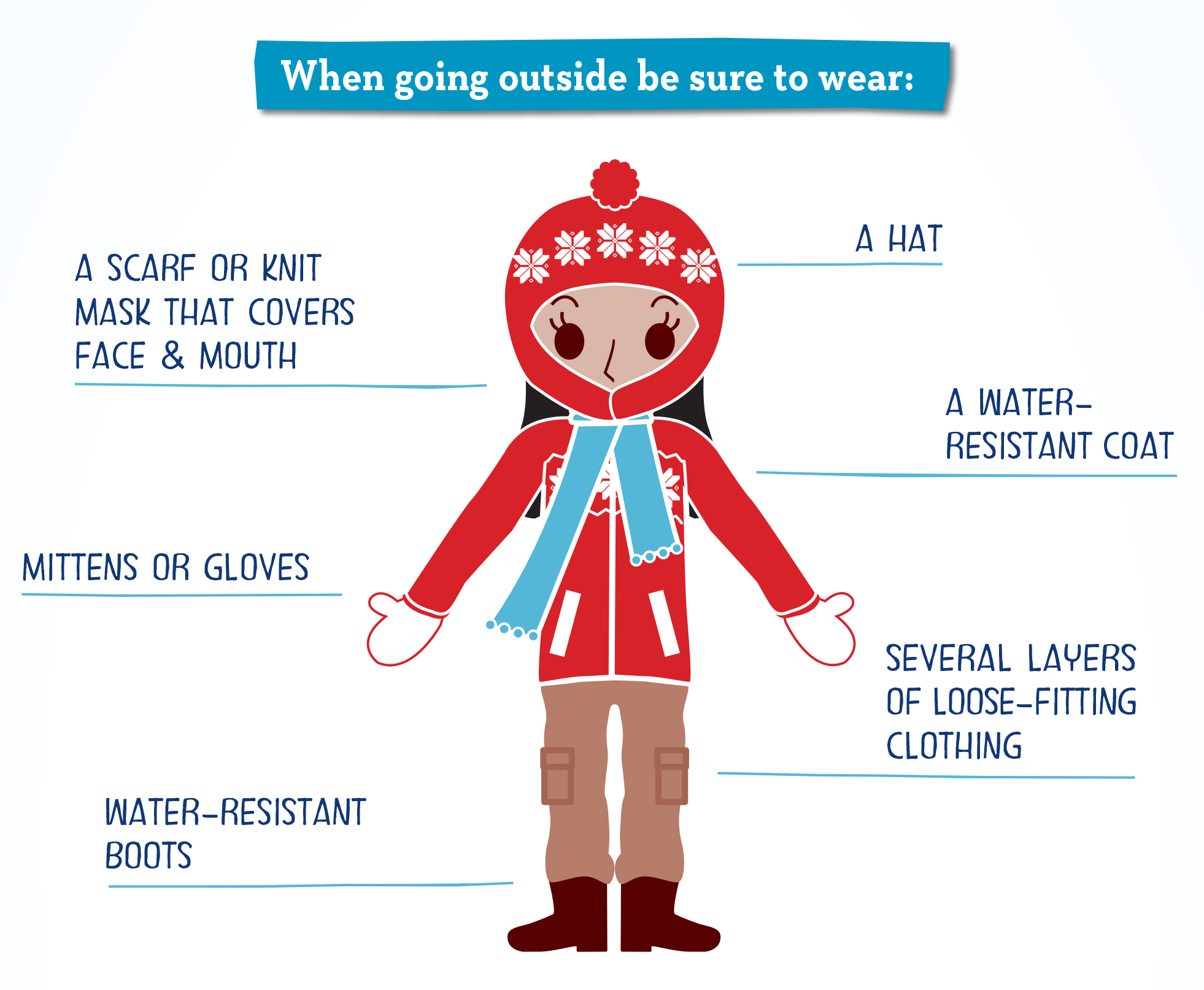When the temperature drops, it’s important to protect yourself against cold weather-related injuries, like frostbite (freezing of the skin and underlying tissues), frostnip (a milder form of frostbite that doesn't cause permanent skin damage), hypothermia (dangerously low body temperature), and cold-induced asthma attacks.
Protect yourself against the cold:
- Wear warm, loose-fitting clothing in layers to keep moisture away from the skin and maintain your body temperature.
- Wear a water-resistant jacket and boots.
- Make sure extremities – especially hands and ears – are covered.
- Keep dry. Wet clothes and shoes increase chance of heat loss. Even sweating in shoes/boots can make your feet wet enough to chill much more rapidly.
- Don’t go outside immediately after a hot shower or bath.
- Avoid alcohol consumption. Alcohol causes skin blood vessels to dilate and release heat much more rapidly. It can also cause people do unsafe things (like not covering their ears, not buttoning their coat, diving into piles of snow, etc.).
- If you are an outdoor exercise enthusiast, take extra steps to prevent cold-weather injuries or consider modifying your routine in this sort of weather (e.g. shorten your outdoor routine, run on a treadmill instead of outside, etc.).
- If you have asthma, help prevent cold-induced asthma attacks by covering your nose and mouth with a scarf to warm the air before you breathe it in.
Signs of frostbite:
Please view this chart from the National Weather Service to learn how long you can be exposed to certain temperatures and wind chills before resulting in frostbite.
Symptoms include ...
- At first, cold skin and a prickling feeling
- Numbness
- Red, white, bluish-white or grayish-yellow skin
- Hard or waxy-looking skin
- Clumsiness due to joint and muscle stiffness
- Blistering after rewarming, in severe cases
(Frostnip, a milder form of frostbite, irritates the skin, causing redness and numbness. Frostnip doesn't permanently damage the skin.)
Treatment for frostbite:
If you ever suspect that you have frostbite, seek immediate medical attention. Do not rub or bump the affected area. Do not use direct heat such as a heating pad or hair dryer to warm the affected area. Do not pop blisters that appear.
Call Cornell Health for advice 24/7: 607-255-5155, schedule an appointment, or come in during building hours.
More information:
For more information about avoiding frostbite or hypothermia and learning their warning signs, visit the CDC website.


